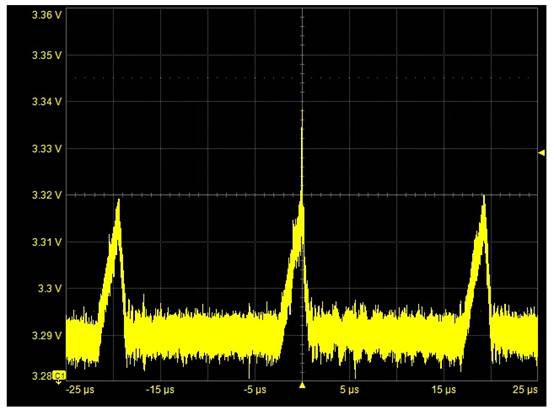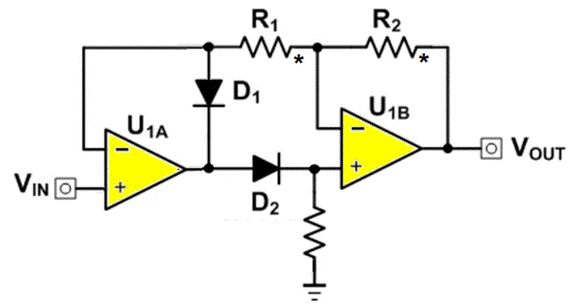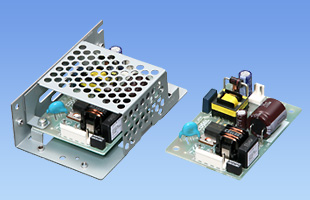很简单了哈,这儿不罗嗦了。
LED.h头文件
#ifndef _LED_H_
#define _LED_H_
// 界说LED称号
#define LED1 0x01
#define LED2 0x02
#define LED3 0x04
// 初始化指定的LED
extern void LED_Init(unsigned char ucLED);
// 点亮指定的LED
extern void LED_On(unsigned char ucLED);
// 平息指定的LED
extern void LED_Off(unsigned char ucLED);
// 回转指定的LED
extern void LED_Toggle(unsigned char ucLED);
#endif // _LED_H_
LED.c文件:
// 包括必要的头文件
#include “LED.H”
#include
#include
#include
#include
#include
#include
// 将较长的标识符界说成较短的方式
#define SysCtlPeriEnable SysCtlPeripheralEnable
#define SysCtlPeriDisable SysCtlPeripheralDisable
#define GPIOPinTypeOut GPIOPinTypeGPIOOutput
/***************************************************************************************************
功用:初始化指定的LED
参数:ucLED是LED称号,取值下列值之一或许它们之间的“或运算”组合方式
LED1
LED2
LED3
回来:无
***************************************************************************************************/
void LED_Init(unsigned char ucLED)
{
if ( ucLED & LED1 )
{
SysCtlPeriEnable(SYSCTL_PERIPH_GPIOD); // 使能GPIOD端口
GPIOPinTypeOut(GPIO_PORTD_BASE , GPIO_PIN_0); // 设置PD0为输入类型
LED_Off(LED1); // 平息LED1
}
if ( ucLED & LED2 )
{
SysCtlPeriEnable(SYSCTL_PERIPH_GPIOG); // 使能GPIOG端口
GPIOPinTypeOut(GPIO_PORTG_BASE , GPIO_PIN_2); // 设置PG2输入类型
LED_Off(LED2); // 平息LED2
}
if ( ucLED & LED3 )
{
SysCtlPeriEnable(SYSCTL_PERIPH_GPIOG); // 使能GPIOG端口
GPIOPinTypeOut(GPIO_PORTG_BASE , GPIO_PIN_3); // 设置PG3输入类型
LED_Off(LED3); // 平息LED3
}
}
/***************************************************************************************************
功用:点亮指定的LED
参数:ucLED是LED称号,取值下列值之一或许它们之间的“或运算”组合方式
LED1
LED2
LED3
回来:无
***************************************************************************************************/
void LED_On(unsigned char ucLED)
{
if ( ucLED & LED1 )
{
GPIOPinWrite(GPIO_PORTD_BASE , GPIO_PIN_0 , 0x00); // PD0输出低电平
}
if ( ucLED & LED2 )
{
GPIOPinWrite(GPIO_PORTG_BASE , GPIO_PIN_2 , 0x00); // PG2输出低电平
}
if ( ucLED & LED3 )
{
GPIOPinWrite(GPIO_PORTG_BASE , GPIO_PIN_3 , 0x00); // PG3输出低电平
}
}
/***************************************************************************************************
功用:平息指定的LED
参数:ucLED是LED称号,取值下列值之一或许它们之间的“或运算”组合方式
LED1
LED2
LED3
回来:无
***************************************************************************************************/
void LED_Off(unsigned char ucLED)
{
if ( ucLED & LED1 )
{
GPIOPinWrite(GPIO_PORTD_BASE , GPIO_PIN_0 , 0x01); // PD0输出高电平
}
if ( ucLED & LED2 )
{
GPIOPinWrite(GPIO_PORTG_BASE , GPIO_PIN_2 , 0x01 《《 2); // PG2输出高电平
}
if ( ucLED & LED3 )
{
GPIOPinWrite(GPIO_PORTG_BASE , GPIO_PIN_3 , 0x01 《《 3); // PG3输出高电平
}
}
/***************************************************************************************************
功用:回转指定的LED
参数:ucLED是LED称号,取值下列值之一或许它们之间的“或运算”组合方式
LED1
LED2
LED3
回来:无
***************************************************************************************************/
void LED_Toggle(unsigned char ucLED)
{
unsigned char ucVal;
if ( ucLED & LED1 )
{
ucVal = GPIOPinRead(GPIO_PORTD_BASE , GPIO_PIN_0); // 读取PD0的输出状况
ucVal ^= 0x01; // 状况回转
GPIOPinWrite(GPIO_PORTD_BASE , GPIO_PIN_0 , ucVal); // 更新PD0的输出状况
}
if ( ucLED & LED2 )
{
ucVal = GPIOPinRead(GPIO_PORTG_BASE , GPIO_PIN_2); // 读取PG2的输出状况
ucVal ^= 0x01 《《 2; // 状况回转
GPIOPinWrite(GPIO_PORTG_BASE , GPIO_PIN_2 , ucVal); // 更新PG2的输出状况
}
if ( ucLED & LED3 )
{
ucVal = GPIOPinRead(GPIO_PORTG_BASE , GPIO_PIN_3); // 读取PG3的输出状况
ucVal ^= 0x01 《《 3; // 状况回转
GPIOPinWrite(GPIO_PORTG_BASE , GPIO_PIN_3 , ucVal); // 更新PG3的输出状况
}
}
主函数main.c
// 根据《Stellaris外设驱动库》的例程:两只LED替换闪耀
// 包括必要的头文件
#include “LED.H”
#include
#include
#include
#include
#include
#include
// 将较长的标识符界说成较短的方式
#define SysCtlPeriEnable SysCtlPeripheralEnable
#define SysCtlPeriDisable SysCtlPeripheralDisable
#define GPIOPinTypeIn GPIOPinTypeGPIOInput
#define GPIOPinTypeOut GPIOPinTypeGPIOOutput
// 界说KEY
#define KEY_PERIPH SYSCTL_PERIPH_GPIOG
#define KEY_PORT GPIO_PORTG_BASE
#define KEY_PIN GPIO_PIN_5
// 避免JTAG失效
void JTAG_Wait(void)
{
SysCtlPeriEnable(KEY_PERIPH); // 使能KEY地点的GPIO端口
GPIOPinTypeIn(KEY_PORT , KEY_PIN); // 设置KEY地点管脚为输入
if ( GPIOPinRead(KEY_PORT , KEY_PIN) == 0x00 ) // 假如复位时按下KEY,则进入
{
for (;;); // 死循环,以等候JTAG衔接
}
SysCtlPeriDisable(KEY_PERIPH); // 制止KEY地点的GPIO端口
}
// 界说大局的体系时钟变量
unsigned long TheSysClock = 12000000UL;
// 延时
void Delay(unsigned long ulVal)
{
while ( –ulVal != 0 );
}
// 体系初始化
void SystemInit(void)
{
SysCtlLDOSet(SYSCTL_LDO_2_50V); // 设置LDO输出电压
SysCtlClockSet(SYSCTL_USE_OSC | // 体系时钟设置,选用主振荡器
SYSCTL_OSC_MAIN |
SYSCTL_XTAL_6MHZ |
SYSCTL_SYSDIV_1);
/*
SysCtlLDOSet(SYSCTL_LDO_2_75V); // 装备PLL前将LDO电压设置为2.75V
SysCtlClockSet(SYSCTL_USE_PLL | // 体系时钟设置,选用PLL
SYSCTL_OSC_MAIN | // 主振荡器
SYSCTL_XTAL_6MHZ | // 外接6MHz晶振
SYSCTL_SYSDIV_10); // 分频成果为20MHz
*/
TheSysClock = SysCtlClockGet(); // 获取体系时钟,单位:Hz
LED_Init(LED1 | LED2|LED3); // 初始化LED1和LED2
}
// 主函数(程序进口)
int main(void)
{
JTAG_Wait(); // 避免JTAG失效,重要!
SystemInit(); // 体系初始化
for (;;)
{
LED_On(LED1);
Delay(200 * (TheSysClock / 4000)); // 延时约200ms
LED_Off(LED1);
LED_On(LED2);
Delay(200 * (TheSysClock / 4000)); // 延时约200ms
LED_Off(LED2);
LED_On(LED3);
Delay(200 * (TheSysClock / 4000)); // 延时约200ms
LED_Off(LED3);
}
}









